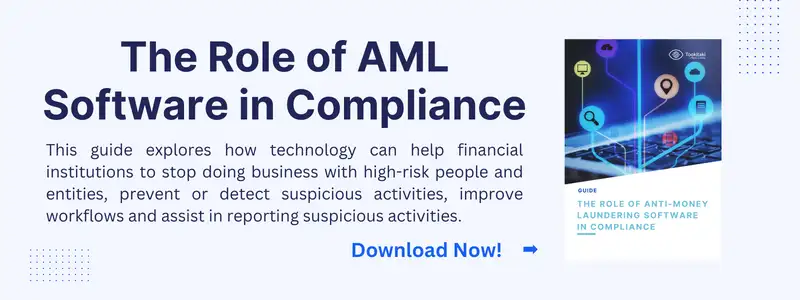The world of anti-money laundering (AML) and counter-terrorism financing (CTF) is continually evolving, with regulatory bodies like the Financial Action Task Force (FATF) at the helm, steering the global community towards safer financial shores. The fifth plenary under the presidency of T. Raja Kumar of Singapore has concluded, marking significant strides in the battle against financial crimes. This blog post delves into the key outcomes of the plenary, shedding light on their implications for professionals in the finance and AML sectors.
Enhancing Global Beneficial Ownership Transparency
The FATF has finalized a new risk-based guidance for implementing Recommendation 25, focused on the beneficial ownership and transparency of legal arrangements. This move is monumental in the FATF's ongoing efforts to improve global transparency and prevent the misuse of corporate structures and legal arrangements by criminals and terrorists. The guidance signifies a crucial step towards eliminating the shadows where illicit activities thrive.
The Implications:
For AML professionals, this means a shift towards more rigorous due diligence processes. Financial institutions must adapt their systems and procedures to align with the FATF's enhanced standards, ensuring a thorough understanding of the beneficial ownership of entities and legal arrangements they engage with. This development underscores the importance of advanced analytical tools and training in uncovering and reporting complex ownership structures.
Adapting to the Digital Transformation: Virtual Assets
The FATF identified jurisdictions with significant virtual asset activities to assist them in complying with FATF requirements for supervising and regulating this burgeoning sector. With the virtual asset space growing at an unprecedented rate, this initiative is crucial for closing the gaps that allow for money laundering and terrorist financing.
The Implications:
The focus on virtual assets highlights the need for AML professionals to stay abreast of technological advancements and regulatory developments in this area. Understanding the nature of virtual assets and the risks they pose is essential for developing effective AML/CFT frameworks. This also means that institutions must invest in technology and training to effectively supervise and regulate virtual asset service providers (VASPs).
Striving for Payment Transparency
In response to the evolving landscape of payment systems, the FATF has proposed amendments to Recommendation 16, aimed at ensuring the technology-neutrality of FATF standards while enhancing the transparency and efficiency of cross-border payments. This initiative reflects the FATF's commitment to adapting its standards to the changing financial environment.
The Implications:
For the financial sector, this means a push towards adopting and integrating new payment technologies that comply with AML/CFT standards. Institutions must be prepared to update their systems and processes to facilitate faster, more transparent, and inclusive cross-border payments. This also underscores the importance of collaboration with fintech companies and other stakeholders in the payment ecosystem.
Protecting Non-Profit Organisations from Abuse
The FATF's modifications to its assessment methodology, reflecting recent revisions to protect non-profit organizations (NPOs) from potential abuse for terrorist financing, signify a balanced approach to regulation. By focusing on risk-based measures, the FATF aims to prevent the misuse of NPOs while ensuring that legitimate charitable activities are not unduly hindered.
The Implications:
This outcome emphasizes the need for financial institutions and NPOs to implement risk-based AML/CFT measures tailored to their specific risk profiles. AML professionals must work closely with NPOs to provide guidance and support in establishing effective risk assessment and mitigation strategies, fostering a culture of compliance without stifling humanitarian efforts.
Final Words
The latest FATF Plenary outcomes are a testament to the global commitment to combatting financial crime. As AML professionals, staying informed of these developments is crucial for navigating the complexities of the regulatory landscape and ensuring the integrity of the global financial system. The advancements in beneficial ownership transparency, the focus on virtual assets, the push for payment transparency, and the protection of non-profit organizations are significant milestones in our collective effort to thwart financial crime. These developments not only shape the future of AML compliance but also reinforce the importance of collaboration, innovation, and vigilance in the fight against money laundering and terrorism financing.
The outcomes of the latest FATF Plenary underscore the importance of staying ahead of the curve in the ever-evolving landscape of AML and CTF. With the advancements in beneficial ownership transparency, the focus on virtual assets, the push for payment transparency, and the protection of non-profit organizations, AML professionals must equip themselves with the necessary tools and knowledge to combat financial crime effectively.
In light of this, it is imperative for AML professionals to explore innovative compliance solutions like Tookitaki's FinCense, which offers comprehensive transaction monitoring, AML screening, and customer risk assessment capabilities. By leveraging advanced technologies and staying informed of regulatory developments, AML professionals can enhance their AML/CFT frameworks and contribute to a more secure and transparent global financial ecosystem.
Anti-Financial Crime Compliance with Tookitaki?





